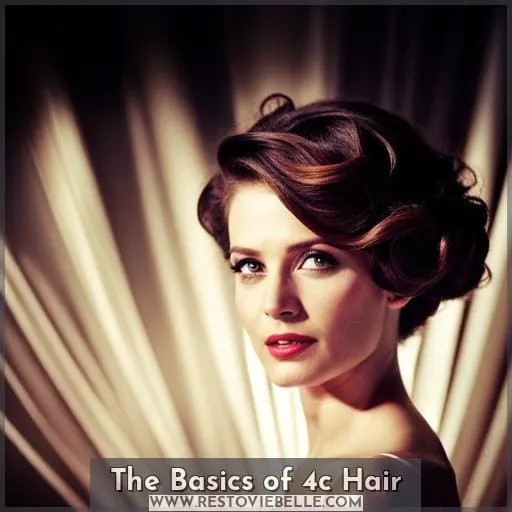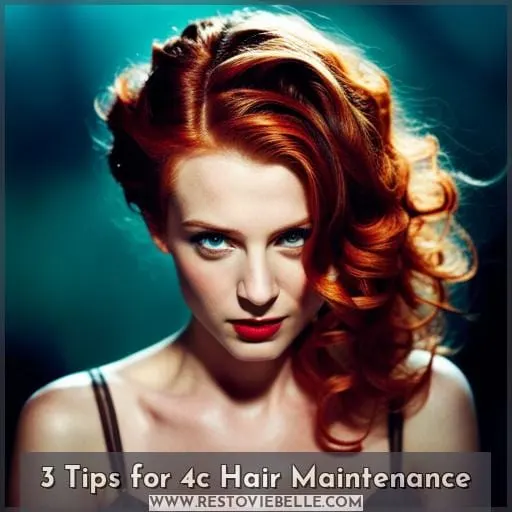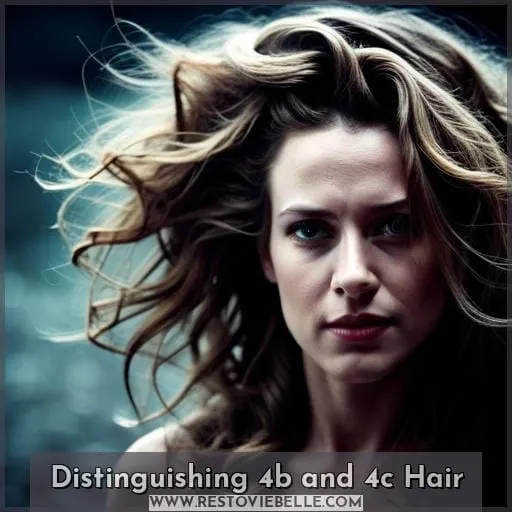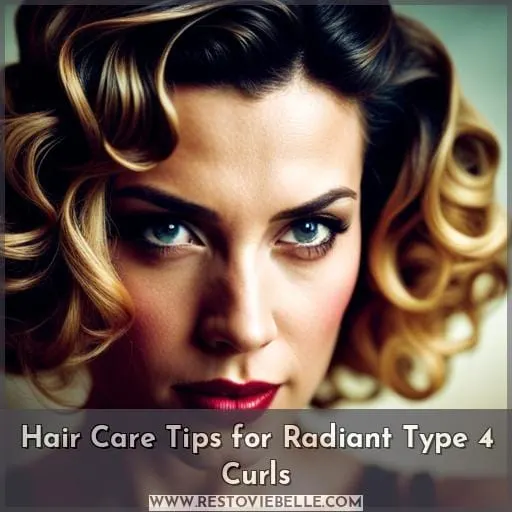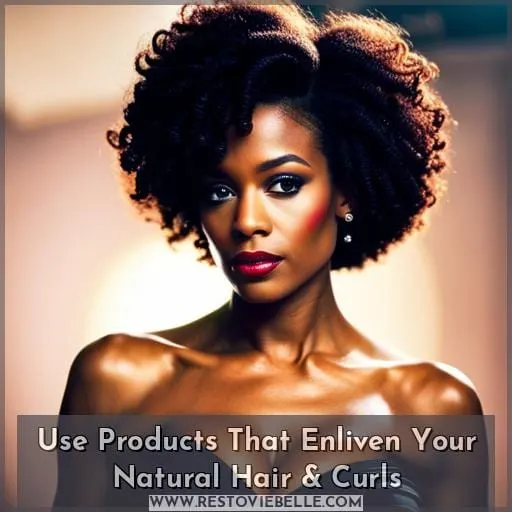This site is supported by our readers. We may earn a commission, at no cost to you, if you purchase through links.
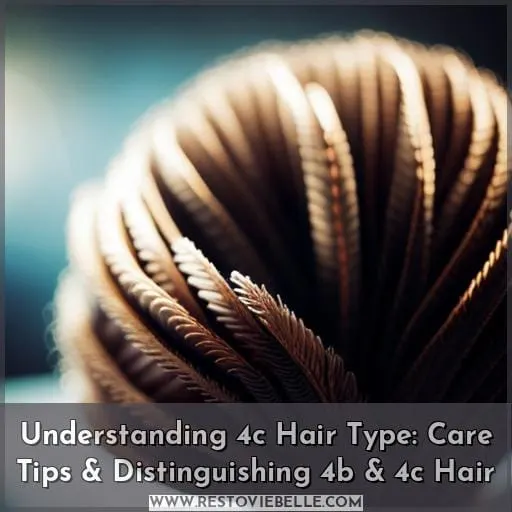 Do you ever feel like your 4c hair has a mind of its own? With so many steps, products, and techniques to know about, it can be hard to get the most out of your natural curls. But don’t worry; understanding what is special about 4c hair and learning how to care for it doesn’t have to be overwhelming.
Do you ever feel like your 4c hair has a mind of its own? With so many steps, products, and techniques to know about, it can be hard to get the most out of your natural curls. But don’t worry; understanding what is special about 4c hair and learning how to care for it doesn’t have to be overwhelming.
Let us take you on a journey into the world of type 4 natural hair with helpful tips on distinguishing between types, caring for each one properly, and unlocking radiant locks that make heads turn.
Table Of Contents
Key Takeaways
- Unique type within the Type 4 category.
- Tight coils and voluminous curls.
- Fragile due to a lack of natural oils.
- Prone to dryness and damage.
The Basics of 4c Hair
You’re likely familiar with the concept of natural hair or curly hair, but 4C is a unique type that requires special care and attention to keep it looking healthy. This type of texture belongs in the Type 4 category, which includes tight coils and voluminous curls.
Its horizontal growth pattern can cause significant shrinkage at ends as well as a lack of natural oils, leading to dryness and damage from heat styling tools.
To prevent this, incorporate deep conditioning masks into your routine, along with moisturizing oils like shea butter for hydration tips. Protective hairstyles are also recommended when using chemical treatments, while focusing on custom routines tailored towards individual textures like 4C hair strands for optimal results without heat damage or breakage due to fragility.
When choosing products such as shampoos or creams, focus on ingredients that help define curls while providing essential moisture – avocado oil being one example.
All About Type 4c Hair
Are you ready to learn all about 4C hair? Understanding the coiliest and densest curl pattern, the horizontal growth pattern, and the significant shrinkage of 4C hair can be quite daunting. The fragility of the strands, combined with a lack of natural oils, makes it even more challenging to maintain.
Understanding the Coiliest and Densest Curl Pattern
You’ve likely heard of 4C hair, which has the tightest and most voluminous curls—it’s a real head-turner! It is distinguished by its horizontal growth pattern and significant shrinkage, up to 75%.
Hair-care techniques include moisturizing tips, hydration techniques such as co-washing, protective styling like silk/satin pillowcases, using natural oils for frizz control, or taking a hair type quiz.
Heat styling should be avoided due to fragility, leading to breakage and damage.
Proper care can help you achieve beautiful curly locks that are sure to turn heads everywhere you go!
Horizontal Growth Pattern and Significant Shrinkage
Discover how 4C hair’s horizontal growth pattern and significant shrinkage can create unique challenges for styling. Those with Type 4C curls need to consider hydration strategies, product selection, protective styling, and deep conditioning to maintain curl shape.
Shrinkage can be as high as 75%, so it’s essential that the correct products are used for definition.
Differing from other hair types due to its coiliest and densest curl patterns, understanding 4C hair’s characteristics helps one select the best possible care regimen. From using shea butter-infused conditioners or aloe vera juice in a co-wash routine – appropriate choices ensure optimal health of these delicate strands while avoiding damaging frizziness or tangles caused by traditional brushes.
Fragility and Lack of Natural Oils
Due to its fragility and lack of natural oils, 4C hair is like a delicate flower that needs special care. To ensure it’s protected from damage, use hydrating ingredients like shea butter and avocado oil when cleansing or co-washing.
Protective styling, such as braids, can reduce manipulation which leads to breakage. Comb your hair using wide tooth combs to prevent heat damage. When applying oil, do so lightly to avoid weighing the strands down while still providing enough moisture for the cuticles.
To prevent hair breakage, avoid harsh treatments like flat ironing and daily shampooing. Instead, opt for gentle products specifically designed for type 4 hair textures. Additionally, incorporating protective styles will help keep your curls healthy.
3 Tips for 4c Hair Maintenance
Are you looking for ways to step up your 4c hair maintenance routine? Try out these three tips and experience the benefits of a more personalized approach: Step up your conditioner game, add a touch of silk or satin, and experience the benefits of co-washing.
Step Up Your Conditioner Game
Boost your 4c hair maintenance routine by upgrading to a powerful conditioner. To keep your curls healthy and hydrated, condition regularly with rich ingredients that can penetrate deep into the strands.
Start moisturizing often and apply oil only when necessary to avoid overloading hair follicles with product buildup.
Here are some tips:
- Moisturize often.
- Hydrate daily.
- Avoid heat styling tools as much as possible.
- Apply oil sparingly.
- Use conditioning masks occasionally in place of regular conditioners for added moisture and nourishment.
Incorporate these elements into your routine for an easy way to give yourself the best care tailored specifically towards 4c hair!
Add a Touch of Silk or Satin
Slip into something a bit more comfortable—like silk and satin—to reduce the amount of breakage, frizz, and tangles your 4C hair experiences. Satin pillowcases provide protection from friction as you sleep while also helping to retain moisture in your curls for longer-lasting definition.
Silk pillowcases help to lock in hydration even better since they have smaller fibers, which allow for easier absorption of natural oils produced by the scalp. Investing in both can be beneficial when styling 4C hair type. They will keep moisturized curls defined without damaging them with excessive heat or chemicals.
Experience the Benefits of Co-Washing
Try co-washing to experience the benefits of hydration and definition for your 4C hair.
- Use a conditioner with natural oils like avocado oil or shea butter.
- Wash in sections to prevent breakage and preserve curl pattern.
- Incorporate deep conditioning masks into your routine to nourish your hair.
- Enhance moisturization by utilizing protective styling techniques.
- Utilize appropriate products designed specifically for Type 4 curls, such as the Organics Hair Care range.
Co-washing is essential when it comes to maintaining healthy, vibrant Type 4 curls – so why not give it a try? With regular care using these tips, you’ll be able to maximize the potential of your beautiful black coils!
Distinguishing 4b and 4c Hair
You may have heard of 4b and 4c hair types, but what do they really mean? 4b hair is curly with a zigzag pattern that looks like the letter Z, while 4c has tight coils and an angular shape. Understanding the differences between these two textures can help you better care for them both.
What is 4b Hair?
Discover how 4b hair differs from its Type 4 counterpart, 4c hair. Both textures have tight coils, but whereas the shrinkage of 4c curls can be up to 75%, it is less for those with a looser curl pattern such as type 4b.
Maintenance and styling differ too. While both require moisture to prevent dryness, products such as coconut oil and shea butter work better on tighter strands like those found in the former texture, while creams are often preferred when dealing with the latter’s softer waves.
When considering tools, brushes should generally not be used on either texture. Instead, opt for wide-toothed combs or your fingers! Finally, protective styles are important for all curly types, so use appropriate products designed specifically for type 4b or type 4c hair to ensure the maximum health of your curls throughout any style you choose!
What is 4c Hair?
You can instantly recognize 4c hair by its tight coils, sharp angles, and voluminous texture. It has the coiliest and densest curl pattern within curly hair types. Its horizontal growth pattern leads to significant shrinkage of up to 75%, while the lack of natural oils makes it fragile.
To care for this type of hair, co-washing with shea butter, avocado oil, and aloe juice is recommended. It is also advised to use a silk or satin pillowcase. For moisturization, the LOC method (Liquid Oil Cream) should be applied.
Protective styling such as braids or twists, which require special products designed specifically for Type 3 & 4 textures like Organics by Africa’s Best Kids Hair Formula, is also beneficial.
A tailored routine based on your own needs will help keep curls healthy, vibrant, and protected from damage!
Hair Care Tips for Radiant Type 4 Curls
If you have Type 4 hair, it is important to understand the different characteristics and needs of both 4b and 4c curls. With this knowledge, you can create an effective routine for your radiant Type 4 curls that will keep them healthy and vibrant.
Hair Care for 4b Hair Types
Caring for your 4b hair type requires dedication and commitment. It is estimated that up to 75% of the natural curl pattern can be lost due to shrinkage. Moisturize regularly with oils, creams, and conditioners specially designed for Type 4 hair.
Utilize heat protection when using hot tools or chemical treatments, as well as protective styles like braids or buns when possible.
To develop an effective routine tailored specifically to you, take a detailed online quiz regarding your individual texture and length retention goals.
With proper maintenance, hydration tips from specialized products such as Organics by Africa’s Best Curl Care line will keep those kinks healthy while helping preserve their unique coily pattern!
Hair Care for 4c Hair Types
Unlock the secrets of your voluminous and vibrant Type 4 curls with a tailored hair care routine!
To ensure healthy interlocked curls, use moisturizing tips such as:
- Conditioner use
- Coconut oil and rice water for hydration
- Protective styling options like twists or braids
- Natural oils/butters
Take a hair quiz to get an optimal routine that’s specific to your texture.
Avoid heat damage by using lower temperatures when styling or opt for heat-free methods instead.
Deep conditioning masks are also great for maintaining moisture in the strands while preventing breakage from dryness.
Lose yourself in lavish locks without sacrificing their integrity – find out what works best for you!
Use Products That Enliven Your Natural Hair & Curls
To keep your Type 4 curls looking vibrant and healthy, incorporate products that enhance the natural texture of your hair. Despite any initial hesitation you may have, using specialized products for 4C is worth it to ensure long-term nourishment and hydration.
Try moisturizing ingredients like shea butter or avocado oil in a conditioning mask or use the LOC method (Liquid+Oil+Cream) when styling to achieve maximum moisture retention.
Protective styles are especially beneficial as they provide additional hydration while ensuring minimal manipulation of the strands.
Moisturizers with added emollients can further define curl patterns while providing extra volume without sacrificing thickness; perfect for achieving those beautiful afros! So, embrace what makes you unique by implementing an effective product-based strategy catered towards preserving all aspects of your wonderful type four coils: health, shine, definition – even shrinkage!
Frequently Asked Questions (FAQs)
What is the difference between 4B and 4C hair?
Discover the difference between 4B and 4C hair: 4B is a looser, more defined curl pattern with less shrinkage than 4C, whereas 4C has tighter coils with intense volume and significant shrinkage, up to 75%.
What are the best products to use on 4C hair?
Products like shea butter, avocado oil, and aloe juice can help 4C hair thrive! Use the LOC method to moisturize: liquid for hydration; oil for sealing in moisture; cream to lock it all in.
How often should I moisturize my 4C hair?
Moisturizing your 4C hair is like tending to a garden; it requires regular care. Hydrate weekly with natural oils for long-lasting, healthy curls that will thrive in any climate.
Are protective styles beneficial for 4C hair?
Protective styles are essential for 4C hair, like a shield protecting your crown. They can help reduce breakage and maintain moisture while also giving you the freedom to express yourself.
What are the best tools for styling 4C hair?
Styling 4C hair can be challenging – up to 75% shrinkage! Use tools like silk/satin pillowcases, co-washing, and the LOC method to keep curls hydrated. Try paddle brushes for detangling without breakage, plus shea butter & avocado oil for added moisture.
Conclusion
It’s no surprise that 4c hair is the coiliest and densest curl pattern of all the hair types. With its horizontal growth pattern and up to 75% shrinkage, it’s important to understand how to care for this unique hair type.
Surprisingly, did you know that the World Health Organization has estimated that up to 80% of African Americans have 4c hair? To maintain healthy and vibrant Type 4 curls, enhance conditioner use, incorporate silk or satin, and experiment with co-washing.
For 4b hair types, focus on hydration and definition with moisturizing products like coconut oil and rice water. For 4c hair, use the LOC method, wash and condition in sections, and apply appropriate products to enhance natural hair and curls.
What’s more, protective hairstyles and products designed specifically for Type 3 and Type 4 hair can help keep 4c hair looking its best. With the right tips and tailored routine, understanding 4c hair can help you unlock its potential and enjoy beautiful, healthy curls.
